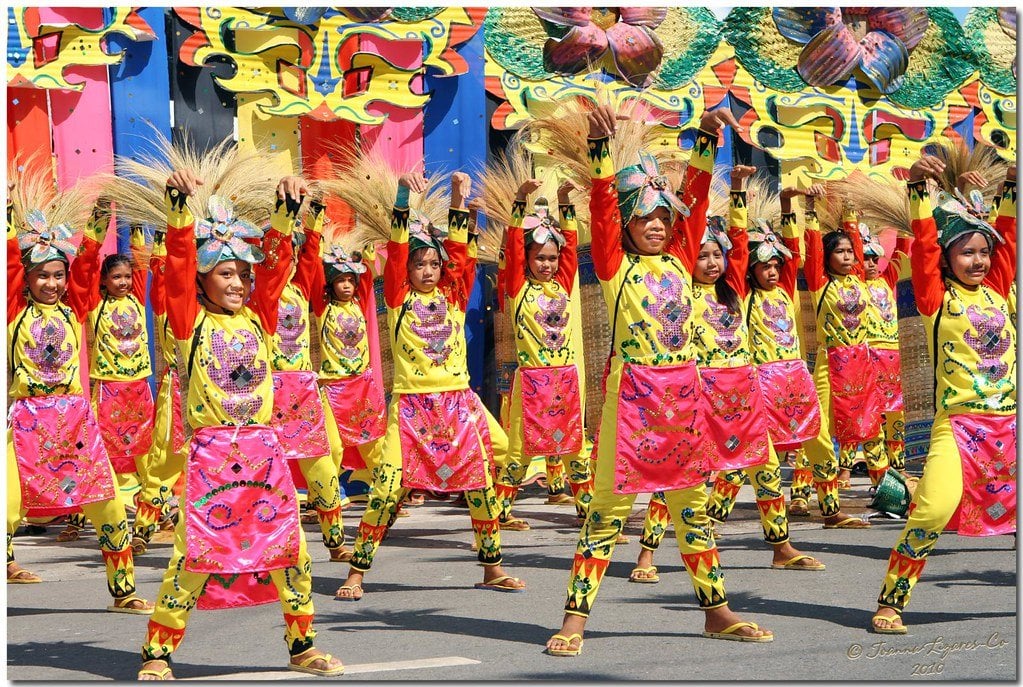The Philippines is well-known across the world for its breathtaking natural beauty as well as for its residents’ love of social gatherings and celebrations. The number of religious and cultural festival celebrated held across the nation is evidence of this.
In the Philippines, there are numerous holidays, extended weekends, and notable events that take place all year round. These vivacious events are distinguished by the people’s heritage, talent, originality, and passion. Many of them are observed for a week or even an entire month, while some just last for a single day.
These Philippines festivals, which are largely cultural and partially religious, show off the jovial nature of Filipinos all over the world. The history, customs, and spiritual side of the Filipino people are highlighted throughout these events. Many of the most well-known best festivals in the area have their roots in some of these magnificent celebrations. Here are the list of celebrations that you can attend if you are traveling to the Philippines at any point this year.
Most Famous Festivals in the Philippines

Many of the holidays observed here are based on religion because of the Spanish impact on Catholic spirituality throughout the Philippines. In addition, there are numerous other vibrant festivals that commemorate significant historical occasions. No matter where these colorful festivals are from, the locals go all out to celebrate them. A sight worth seeing are the spectacular processions, decorations, performances, and parades. The following is a list of festivals celebrated to keep in mind as you prepare for your vacation to the Philippines.
1. Sinulog Festival in Cebu
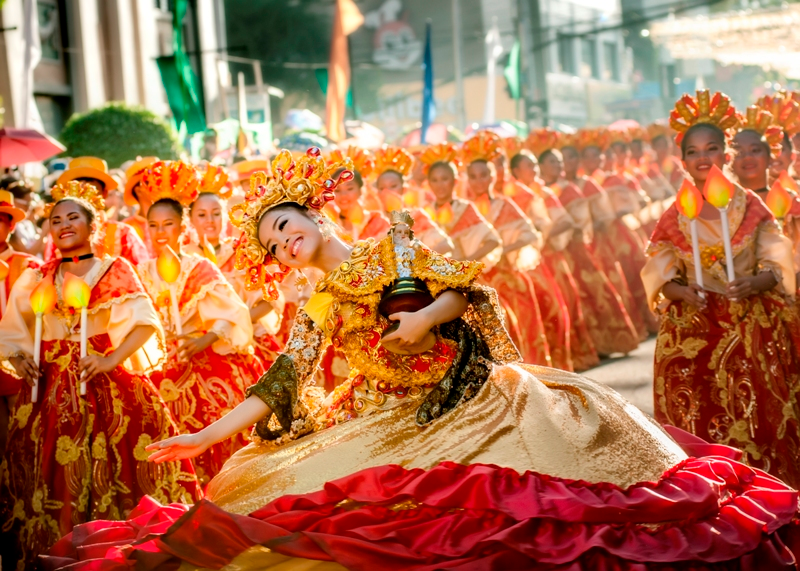
Festival of the Sinulog or Santo Nino/Sto. The Nino Festival is a yearly religious and cultural celebration in Cebu city. It is believed that the celebration was the first most well-known best festivals in the Philippines. The Santo Nio de Ceb, one of the nation’s most well-known historical artifacts, is honored at Sinulog. The Portuguese navigator Ferdinand Magellan presented this statue of the child Jesus to the Rajah Humabon of Cebu city in 1521. This was one of the most significant occasions in Philippine religious history because it helped to establish Christianity there.
It was reported that Queen Juana, Rajah Humabon’s primary consort, danced joyfully while cradling the holy image of the child Jesus. The other people imitated her, and this was recognized as the beginning of the Sinulog dance. The majority of Sinulog dances were based on the same occasion.
The word “sulog,” which means “like water current movement” in Cebuano and describes the forward-backward stride of Sinulog street dancing, is the source of the Sinulog festival. Every third Sunday in January, Cebu City hosts the Sinulog Festival.
The Grand Street Parade, the main attraction of the Sinulog Festival, typically gets under way at around 8 or 9 a.m. on the third week (Sunday) in January. You may enjoy a stunning fireworks display on Sunday night at one of the pyro-musical performances one of the festival highlights. Days and weeks before the Sinulog festival, a number of entertaining events are planned.
2. Kadayawan Festival in Davao
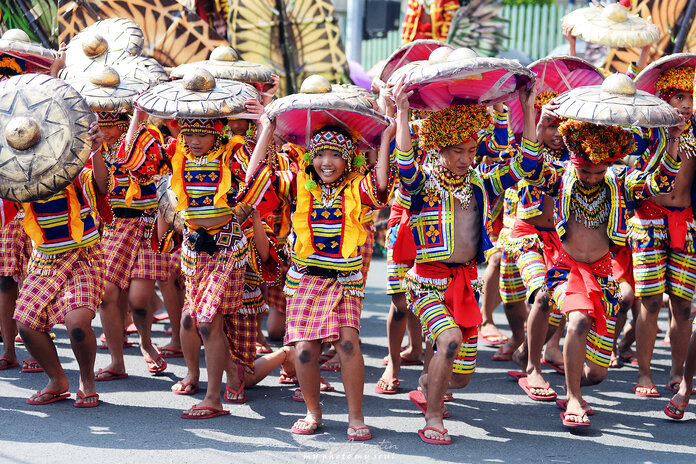
This much anticipated occasion receives a lot of preparation because it is one of the main yearly festivals in the Philippines. It serves as a real pillar of Davao City culture, bringing locals and visitors together for delicious cuisine, beverages, live music, beauty pageants, and street dancing competition.
You can be sure that Davao’s Kadayawan unique harvest festival offers plenty for everyone, from colorful parades of floats to entertaining street dance and costume competition. The name of the cultural events originates from the Mandaya word “madayaw,” which means prized or valuable, since the people utilize this occasion to express gratitude for the abundant harvest of the previous season. In the past, Davao’s ethnic tribes would gather to celebrate bumper crops and engage in ceremonies pays tribute the natural gods.
They used to honor the fantastic year they had by displaying veggies, fruits, flowers, foliage, rice, and maize grains on their matting and in front of their homes. In addition to singing and dancing, they did so in the past, just as now. The festival’s original name, Apo Duwaling, was inspired by three natural wonders found in the area: Mt. Apo, Durian, and Waling-waling. Rodrigo Duterte, who was the Mayor at the time, formally changed its name to the Kadayawan Festival in 1988, and it is being held today, more than 30 years later.
3. Sinukwan Festival in Pampanga
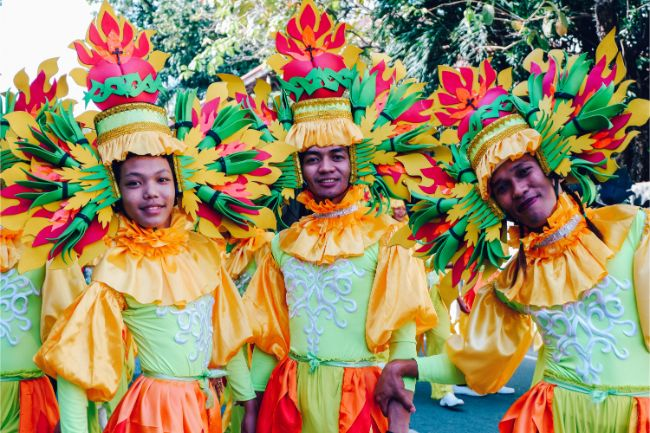
The first is one of the many events that San Fernando city, hosts. It is the Sinukwan Festival, without a doubt! This celebration is being referred to as the “Essence of Kapampangan Spirit” by tourists from all over the nation and the world.
The weeklong celebration, cultural festival known as the Sinukwan Festival is primarily dedicated to honoring the Kapampangan god Aring Sinukwan, who has long been revered as a deity. This huge celebration has a number of competitions, including pageants, street dancing contests, and even regional cookery championships! Additionally, there are a plethora of food fairs located all around the city that allow tourists to sample the ever-famous Kapampangan cuisine.
4. Pintados Festival in Leyte
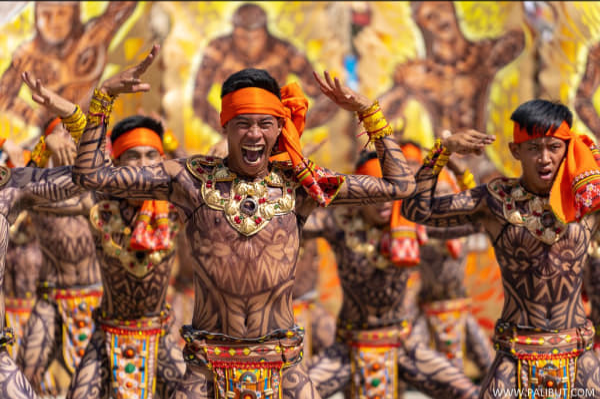
This event honors the pre-Spanish practice of getting tattoos among warriors called locally as pintados in addition to the feast of the Santo Nio. The Spanish Friar, Fr. Contrarily, Ignacio Francisco Alcina S.J. noted in “Historia de las Islas e Indios de Bisayas 1668” that nearly all Visayans had tattoos, with the exception of minors and asug (homosexuals), indicating that the ritual is not just practiced by warriors.
The Pintados-Kasadyaan is one of most colorful festivals in the Philippines is celebrated with a number of activities, including the Festival of Festivals of Leyte, the Pintados Ritual Dance Presentation, and the Pagrayhay for the Grand Parade. Participating municipalities from across the province congregate in Tacloban City to take part in the festivities. Due to each town sharing its own cultural traditions and stories, it is believed that the festival fosters a sense of pride and community.
The folk street dancing performed throughout the event portray our ancestors’ pre-Spanish customs, which included idol worship and the presentation of indigenous melodies and epics. Intricate body paintings including various patterns, figures, and colors are painted on dancers’ bodies as they move through the city’s streets, giving the impression that they are wearing armor.
5. Higantes Festival in Rizal
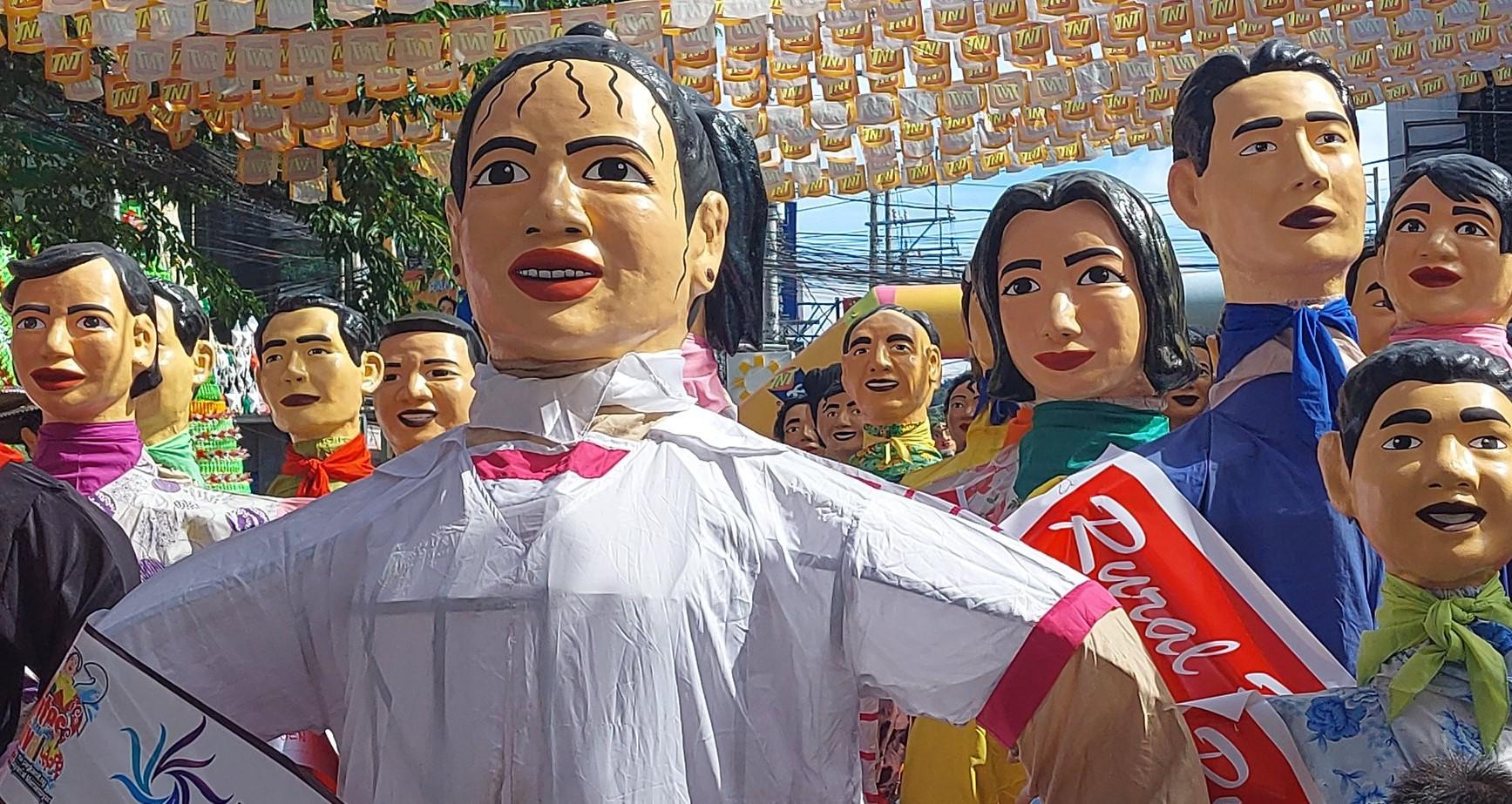
Filipinos enjoy participating in festivities. In order to show their appreciation for the patron saint of their city, San Clemente, one of these significant fiestas, known as the Higantes Festival, is conducted every year on the 22nd and 23rd of November in the City of Angono, Rizal.
One of the distinctive festivals in the Philippines is the Higantes Festival. In order to mock the owners of the Spanish Hacienda, it is stated that this type of celebration was first performed as an act of agricultural protest. According to a study, the Angono people referred to the higante as the “katiwala,” or caretaker, of the hacienda named Karias, with whom they exacted revenge.
In addition, a Frenchman related a tale and foresaw the eventual development and notoriety of giants. With his words, Professor Lucio D. San Pedro, a musician, and Carlos “Botong” Francisco, a visual artist, respectively, became the two most well-known national artists to call Angono their home. Sanguinsin further conjectured that the origin of papier-mache higantes might be traced to Carlos “Botong” Francisco asking Artemio Tajan to inject some joy and celebration into the post-World War II celebration.
6. Penafrancia Festival in Camarines Sur
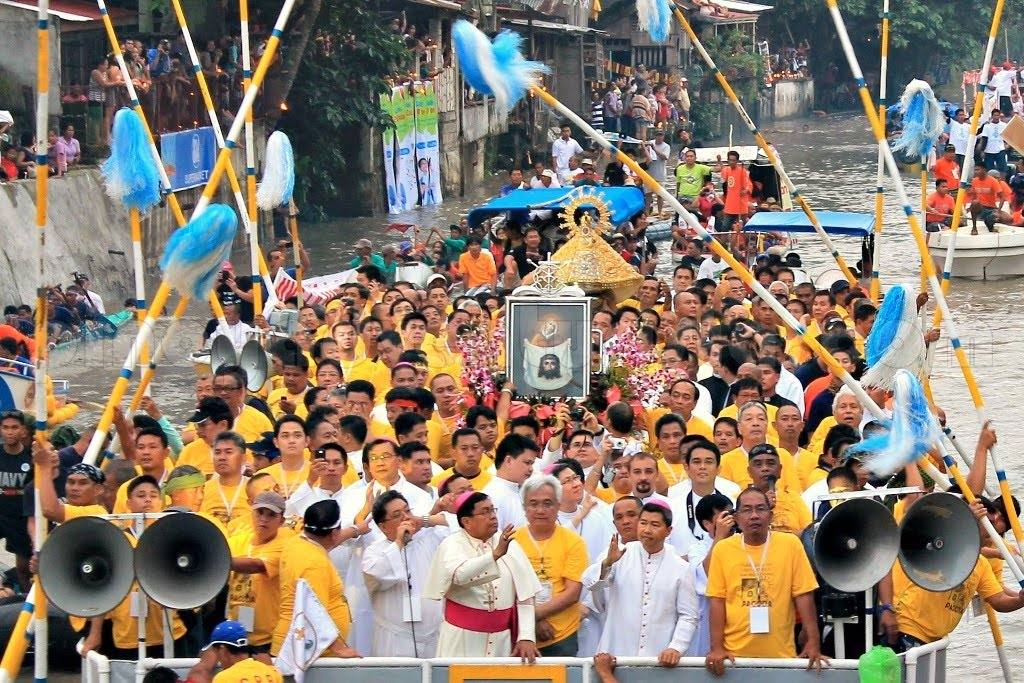
The divine Nuestra Senora de Penafrancia, sometimes referred to as Our Lady of Penafrancia or Ina, is honored during the Penafrancia festival in Bicol by her devout devotees.
During the ceremony, followers remove her from the shrine and parade her. Each year, on the third Sunday in September, the procession travels along the Naga River.
At this moment, Naga looks like a crowd of visitors to an over than 300-year-old festival. They typically come in the hopes of having their prayers answered, for recovery, or just to show their appreciation.
7. T’nalak Festival South Cotabato
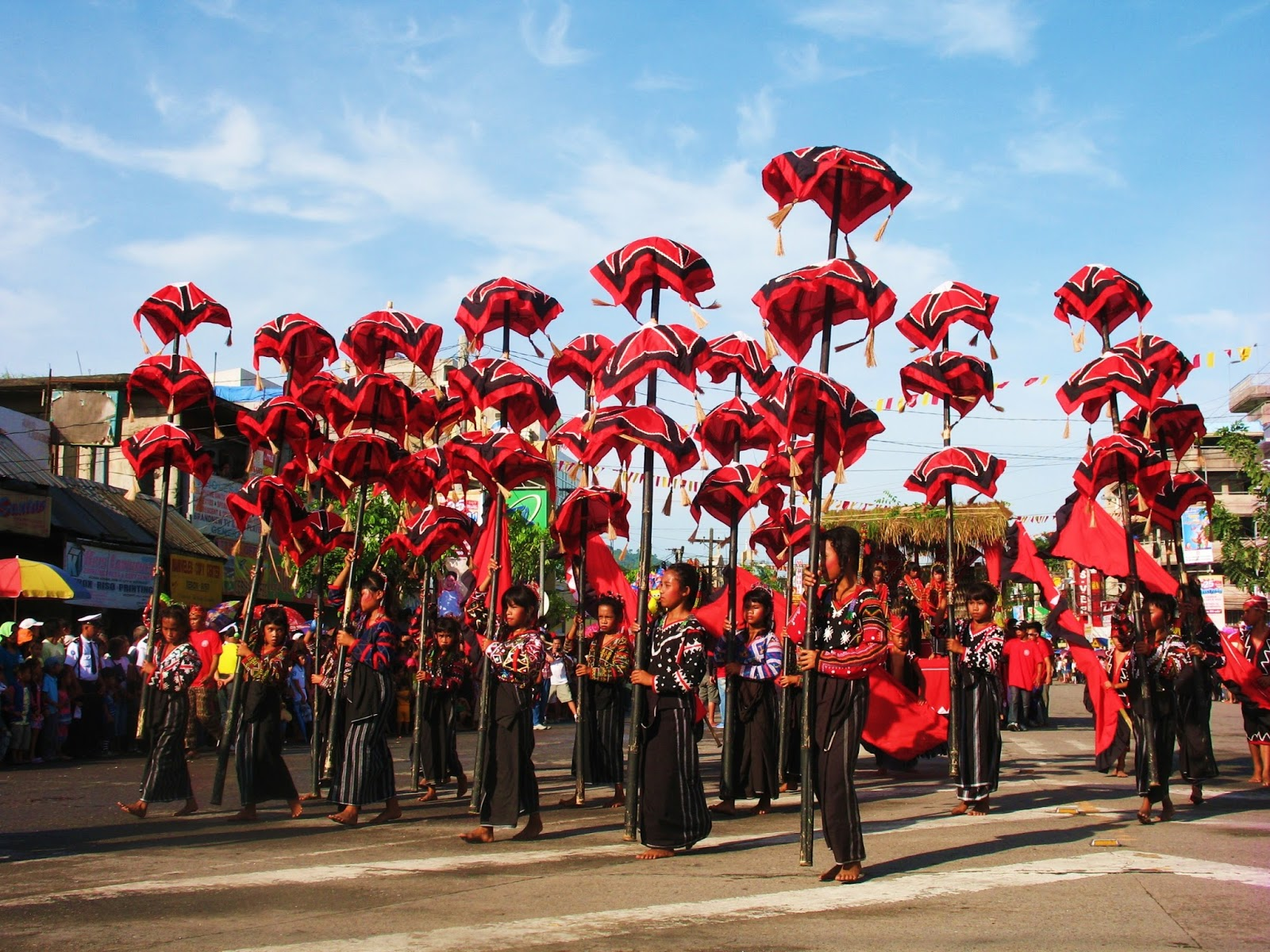
Philippines provinces each celebrate their culture in an own way. In one case, the T’nalak Festival, a significant annual festivals in the Philippines, is held in the South Cotabato province. The festivities is a week-long celebration that takes place every July in Koronadal City, South Cotabato’s capital.
The colorful abaca cloth “t’nalak,” which was designed and weaved by the women from the T’boli tribe in South Cotabato, gives the celebration its name. The individual who makes the cloth “dreamed up” its distinctive design. The T’nalak fabric acts as the festival’s icon because it represents the mixing of the culture, courage, and unity of all of the ethnic communities living in the province, which is why the province is known as “The Land of the Dreamweavers.”
8. Bangus Festival Pangasinan
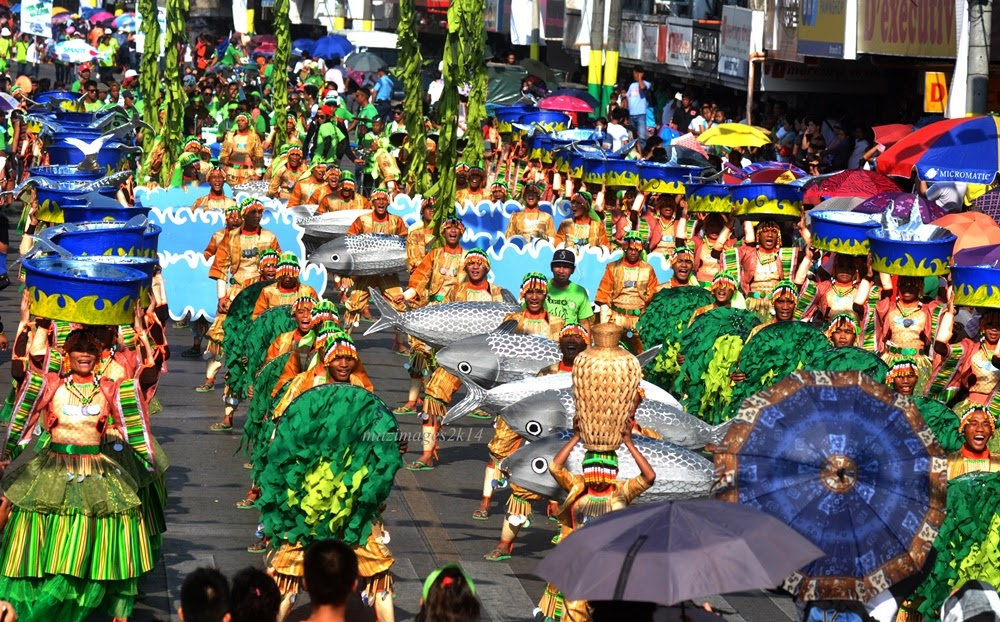
Every year on April 30 in Dagupan City, Pangasinan Province, the Bangus Festival is a cultural and gastronomic event. It is an occasion to honor the city’s production of the bangus fish and several related goods. It is a month-long event that is held as Dagupan City presents itself as the Philippines’ bangus capital, paying homage to the city’s resilient citizens, and boosting the local economy.
The word bangus, the regional term for milkfish (scientific name chanos chanos), is whence the name Bangus Festival originates. It can be produced in fresh, brackish, or salt water and is offered both fresh and frozen. It can be cooked in a variety of ways, including fried, smoked, filleted, or dried. The event, formally known as the Dagupan City Bangus Festival, draws tens of thousands of guests each year.
9. Regada Festival in Cavite
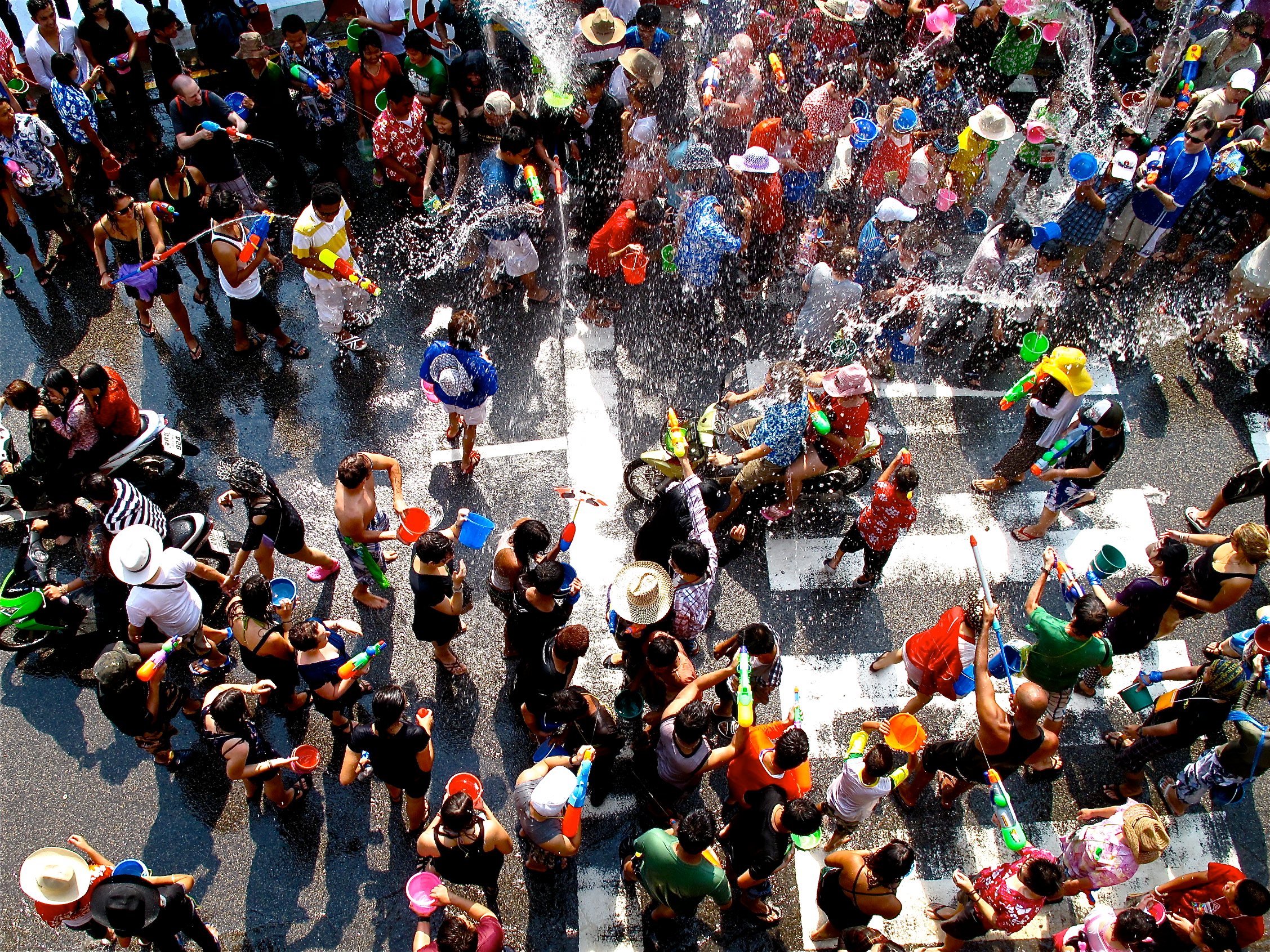
June marks the beginning of classes for residents of Cavite City as well as the celebration of The Regada, one of the city’s most eagerly awaited festivities. The little city of Cavite hosts the annual Regada Water Festival, a traditional water festival. Every year on June 24th, a celebration is organized to honor Saint John the Baptist’s feast day. It is more akin to those well-known water festivals in neighboring provinces, such as the famous Wattah Wattah in San Juan Batangas (1969), which is observed on the same day. Despite having many similarities, the Regada Water Festival is unique in its own right and provides a variety of enjoyable activities for Cavite residents. The celebration began in 1996, during the administration of the former mayor Tim Encarnacion, and since then, it has grown to be one of the most joyous occasions that Cavite has historically observed.
If you intend to take part this festival, you should prepare yourself with a water gun. You may expect to be shot by strangers with squirt guns of all kinds and sizes, and I bet you are not going to leave without anyone getting back at you! Equip yourself with the greatest water cannons, or even better, dunk them in a pail of water! Without getting wet, this celebration won’t be complete. If water guns aren’t enough, don’t worry—firetrucks are on hand to help! To commemorate with this occasion, fire fighters are going to take a little break. From one block to the next, they can be seen, and occasionally they will spout water straight from the firetruck hydraulic host!
10. Singkaban Festival in Bulacan

Every year on September 15th, the province of Bulacan, Philippines, hosts the Singkaban Festival. This week-long festival, which comes to a close on the anniversary of the beginning of the Malolos Congress in 1898, is regarded as the mother of all fiestas in the province.
The name Singkaban Festival is derived from the term singkaban, which describes a welcoming bamboo arch. It was made to be utilized in many festivals, including fiestas, and usually appears in entrances that welcome guests. As a result, bamboo has established itself as a festival staple and is valued as a valuable resource in the province. Similar to the Abrenian Kawayan Festival of Abra, bamboo wood is also celebrated everywhere in the nation.
Other popular festivals in the Philippines you can’t also miss
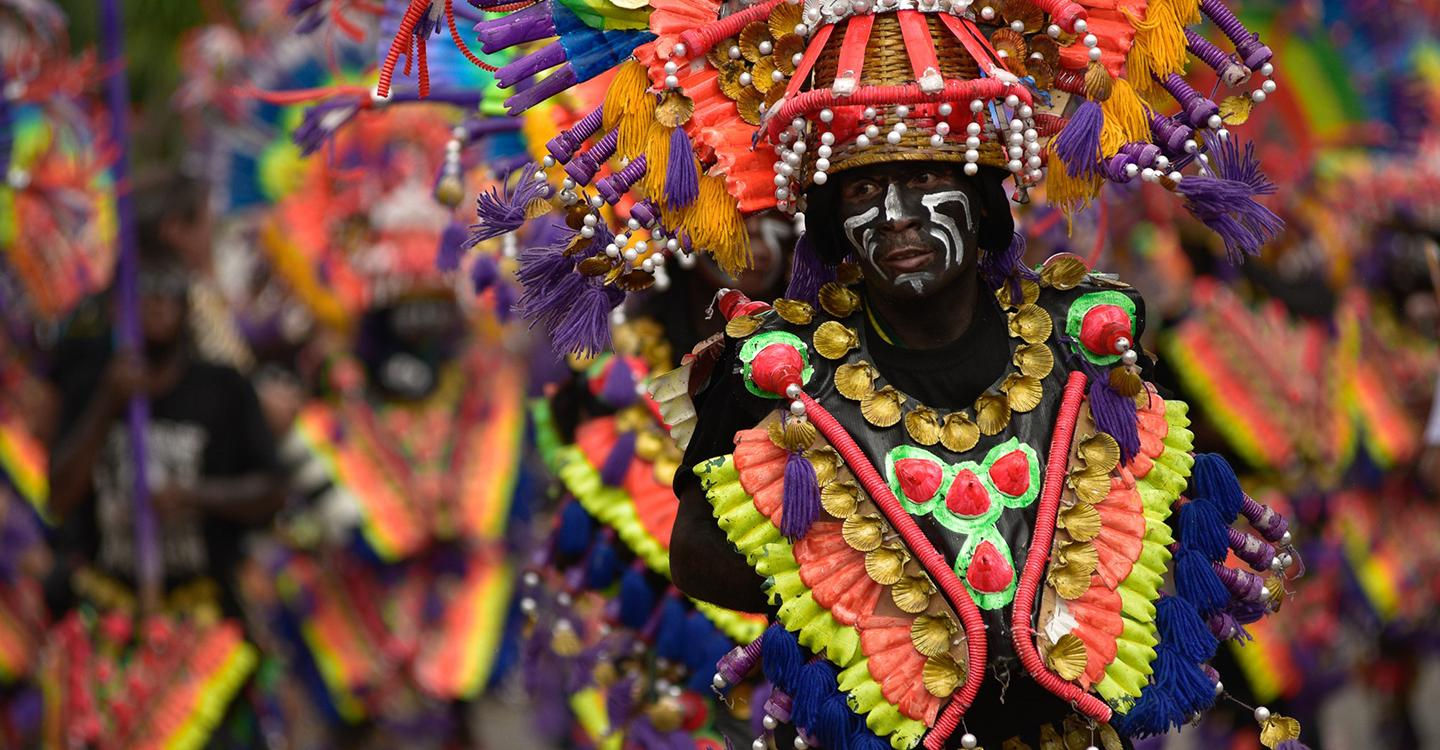
1. Giant lantern festival
The City of San Fernando in the Philippines hosts the Giant Lantern Festival every year in the middle of December. A competition of enormous parol lanterns is part of the festivities. The city is known as the “Christmas Capital of the Philippines” due to the popularity of the celebration.
2. Pahiyas festival
This feast of thanksgiving is held in honor of San Isidro Labrador’s abundant harvest from the previous year. The colorful rice biscuits known as are the most prominent of the expand digestible ornaments that decorate entire houses during the celebration. The patron saint’s image is also carried around town to ensure the farmers of a plentiful harvest in generations to come.
3. Dinagyang festival
A religious and cultural event called the Dinagyang event takes place every year on the fourth Sunday in January in Iloilo City, Philippines, or immediately following the Sinulog in Cebu and the festival of Ati-Atihan in Kalibo, Aklan.
4. Maskara festival
One of the biggest events in the Philippines is the MassKara Festival in Bacolod City. Unbelievably, for more than 30 years the event has provided local and foreign tourists with the opportunity to enjoy themselves, drink, and party in the roadways of Bacolod!
5. Moriones festival
On the Philippine island of Marinduque, a lenten event known as The Moriones takes place every year during Holy Week. According to locals, the “Moriones” are men and women dressed in masks and costumes that resemble the uniforms of the Imperial Roman soldiers. Other festivals throughout the Philippines, where cultural traditions are transformed into street celebrations, have been created as a result of the Moriones tradition.
6. Ati atihan festival
The Kalibo Santo Nio—Ati-Atihan event, also known as the Ati-Atihan Festival, is a Philippine event celebrated each January in numerous municipalities of the municipality of Aklan, Panay Island, in honor of the Santo Nio or baby Jesus. The largest event takes place in Kalibo, the province’s capital, on the third Sunday of January. “To mimic the Ati people” is the meaning of the name Ati-Atihan.
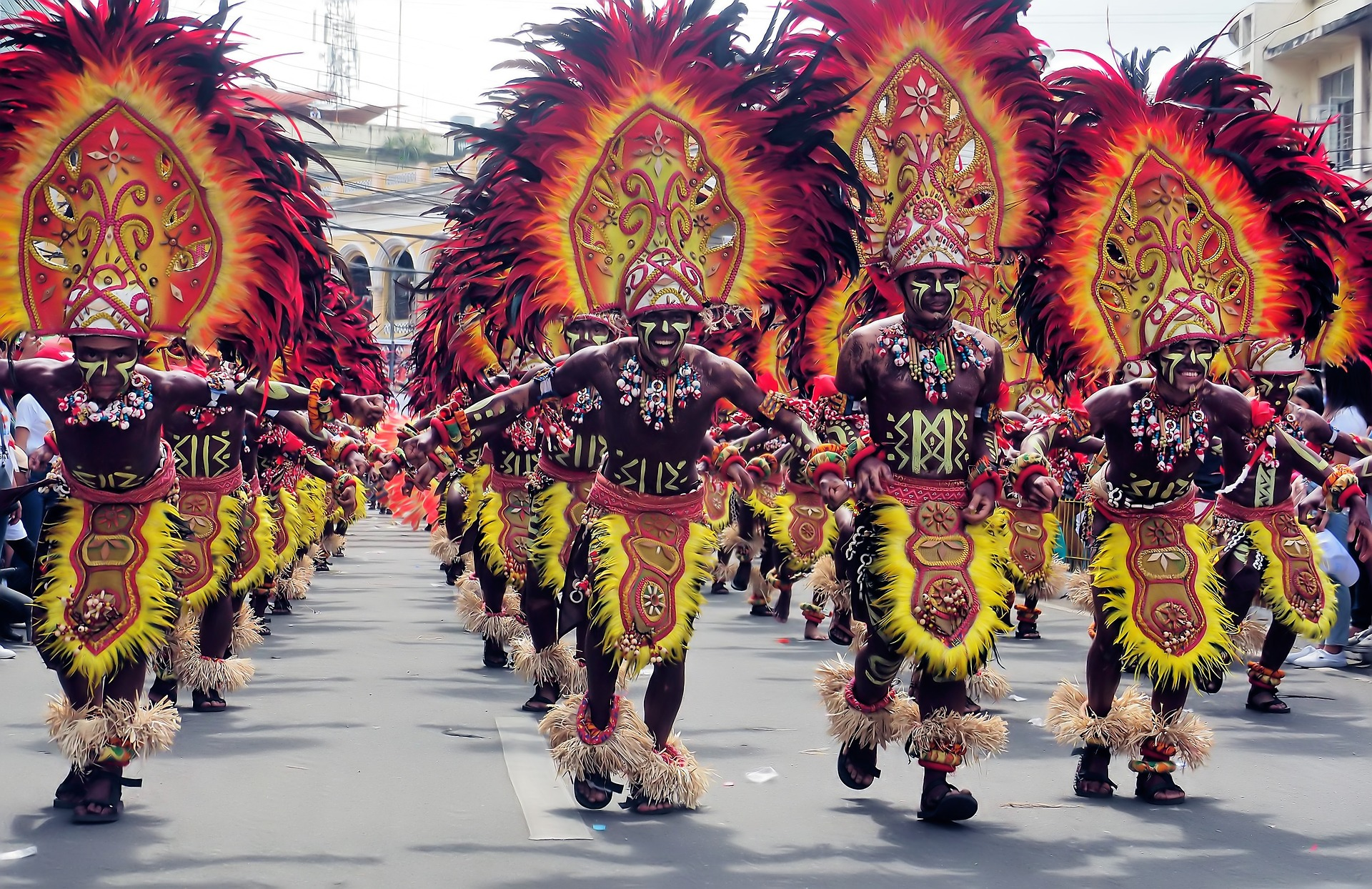
The festival in the Philippines is undoubtedly vibrant and fascinating, with an enormous celebration taking place somewhere in the nation nearly each month of the year. There is always something available all year long for the adventurous traveler seeking some spectacular action.
Now that BRIA Homes affordable house and lots are offered in the area where the festivals in the Philippines is well-known. Bria Homes will help you at every step of the process regardless of the type of home loan you select from the options offered. You may access virtual tours whenever it’s most convenient for you on the Bria website. On their own website and social media platform, the Bria community’s genuine grandeur can be viewed via a desktop or mobile device.
Written by Mat Balbin


